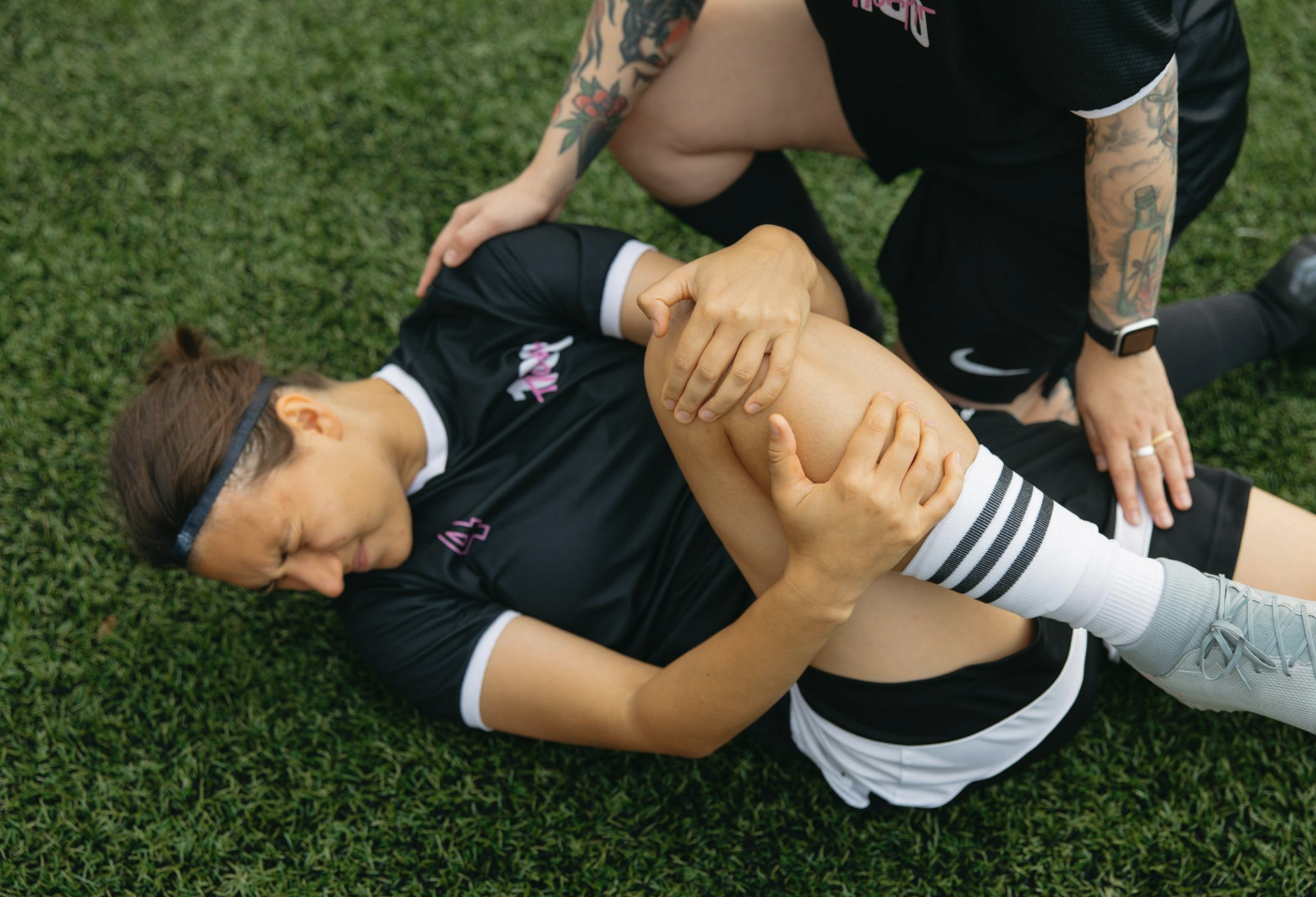
Quick pivots, powerful jumps, and sudden stops—basketball is a fast-paced game.
Those awe-inspiring ankle-breaking crossovers and high-flying dunks make it a fun game. But as much as a game of glory basketball is, there is a risk of injury.
This June, a study published in MDPI revealed that knee injuries are one of the most frequent injuries among basketball players. They make up around 50% of all basketball injuries.
As far as knee injuries are concerned, anterior cruciate ligament (ACL) tear is common. Some big names who suffered a torn ACL are Spencer Dinwiddie, Danilo Gallinari, and Kyle Lowry.
If you’ve recently felt that dreaded pop followed by swelling, pain, and instability, you might have a partial ACL tear. It can be very painful, but don’t panic—it’s not a career-ending injury. You can do plenty to heal and get back on the court.
Here, we’ll explore some effective ways to treat a partial ACL tear.
The best way to care for a partial ACL tear? Follow the R.I.C.E. method.
R.I.C.E.—rest, ice, compression, and elevation—helps reduce pain and swelling with soft tissue injuries. Verywell Health advises starting R.I.C.E. as soon as the injured area starts paining and you notice swelling.
Though your ACL tear is partial, it’s advisable to rest at least for the first 48 hours. Cease all activities that strain your knee.
Ice helps reduce pain and swelling associated with an acute injury. So, grab a pack of ice and apply it on your knee every few hours. That will minimize swelling and numb pain. Don’t apply ice directly to your skin. Wrap it in a towel or another material to prevent frostbite.
Use a compression bandage next. It will provide support as well as reduce fluid buildup. Make sure it’s not too tight, or it will cut off circulation.
Last of all, elevate the knee six to ten inches above heart level. That will drain the fluid back to the heart.
An ACL tear is followed by excessive swelling and pain. Topical pain-relieving creams can offer targeted relief without the side effects of oral painkillers.
Go for pain relievers that contain ingredients like capsaicin or menthol.
Capsaicin, derived from chili pepper, can help relieve pain in joints. Cleveland Clinic explains that it works by causing a cooling or warming sensation on the skin, which prevents pain impulses from reaching the brain.
Menthol is another ingredient to look for in pain-relieving creams. According to a study published in NLM, topical menthol is extensively used to relieve muscle discomfort. As menthol makes the skin feel cool and then warm, it distracts the brain from feeling pain deeper in your joints or muscles.
And if you’re seeking a natural option, CBD creams for pain relief are worth exploring.
Cannabidiol, or CBD, is derived directly from marijuana. It doesn’t contain THC or tetrahydrocannabinol, however. Hence, it doesn’t produce a high.
CBD, Sagely Naturals explains, works with the Endocannabinoid System of the body, which is responsible for regulating many bodily functions. Still, it doesn’t have any intoxicating effects.
And perhaps that is why about 40% of American adults use CBD to manage chronic pain, reported a 2019 Gallup poll.
Note that not all brands sell the same quality CBD products. Do your research, hence. The best CBD cream is one that is packed with natural ingredients and comes with a Certificate of Analysis. Such a cream is not only safe, but also effective. That is why you must read the product’s label carefully before you order any CBD cream.
To keep weight off your knee, wear a brace. It will provide your knee with much-needed support and reduce strain while you move around. As it restricts the extensive movement of the knees, it will accelerate the recovery process.
Unloader, patellofemoral, knee immobilizer, and prophylactic—knee braces are of several types.
For a partial ACL tear, doctors or physical therapists often advise functional knee braces. These braces help move the knees safely, explains Cleveland Clinic. Your knees will move but not too much or too far in one direction.
You’re probably aware of platelet-rich plasma (PRP) injections—aren’t you?
They are promising for people who suffer from hair loss. But do you know that this treatment is gaining popularity among athletes?
It is increasingly being administered as a conservative treatment for ACL injuries, reveals an article published in NLM. The same article further revealed that patients who received PRP therapy within six months of ACL injury regained ligament continuity. They also returned to sports satisfactorily, with only one case of re-rupture.
Why not give PRP injections a try, then? PRP is quite straightforward: your doctor will draw a small amount of your blood and spin it in a centrifuge to concentrate the platelets. Then, they will inject that plasma directly into your injured knee.
You might feel some soreness for a day or two, but you’ll heal significantly quicker than you would otherwise.
Recovering from an ACL tear isn’t easy, especially for basketball lovers who live for the game. But remember, healing takes time. Don’t rush the process. Follow these tips, and soon enough, you’ll be back on the court, dominating the game.